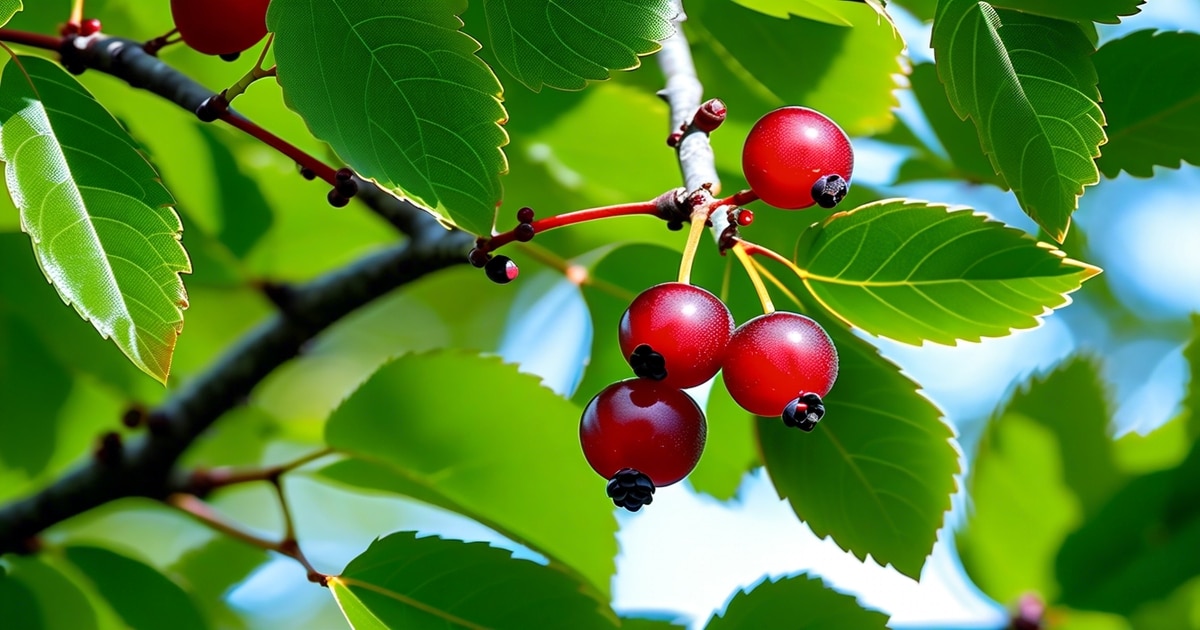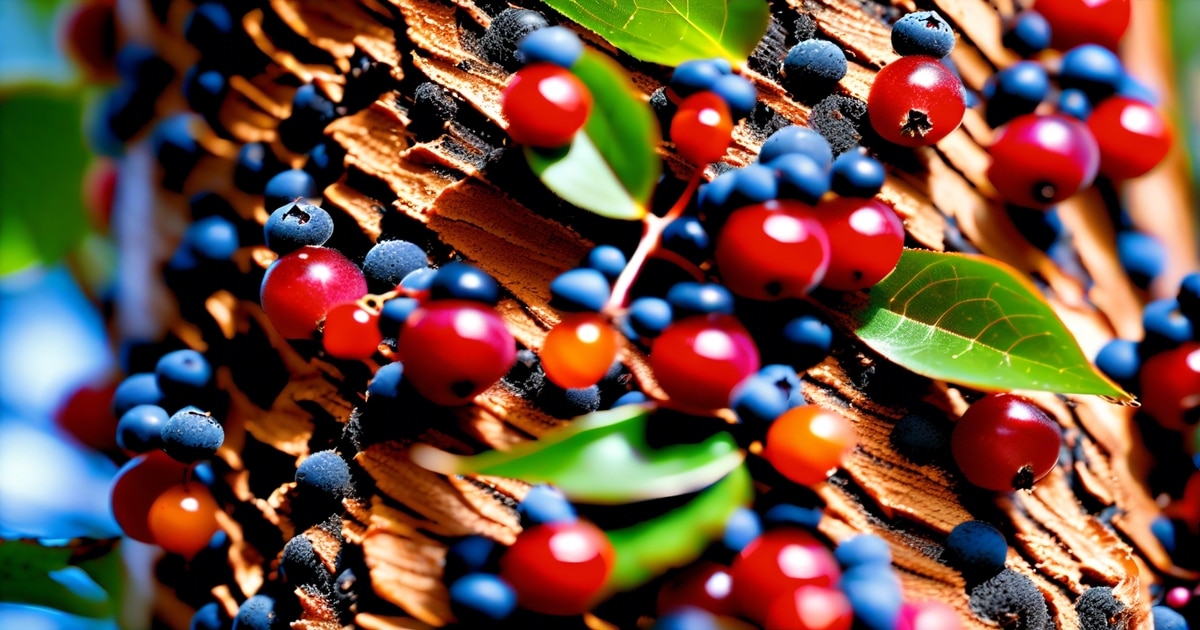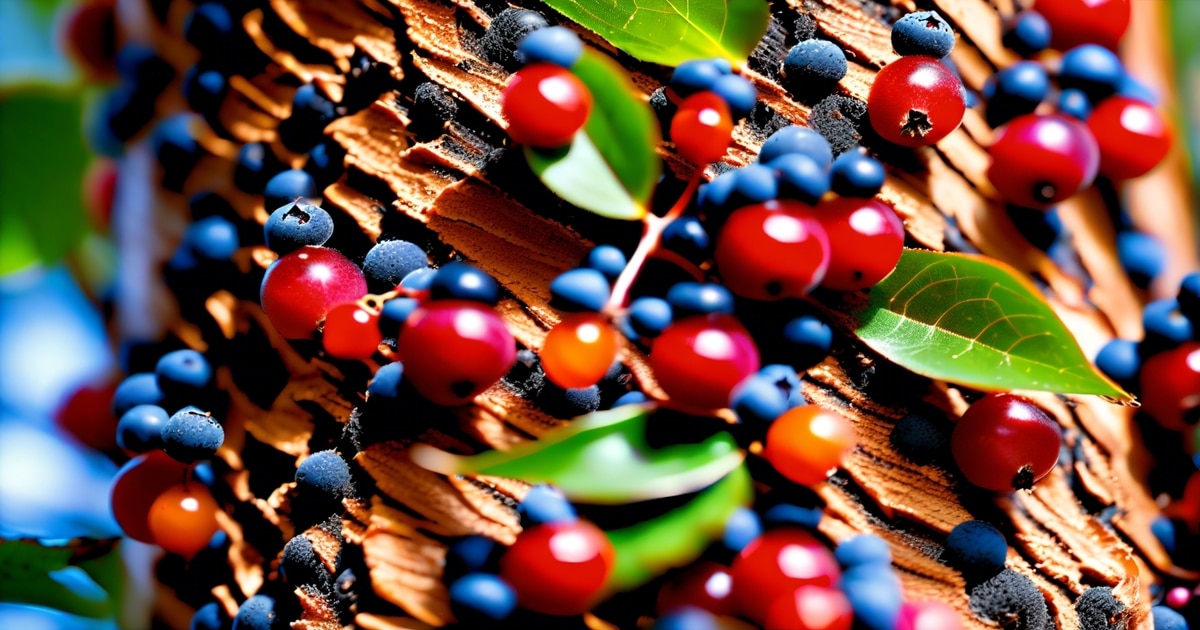Key Takeaways
-
Alder buckthorn, a versatile shrub with medicinal uses and edible berries, poses ecological threats due to its invasive potential.
-
When identifying alder buckthorn shrubs, look for their distinctive characteristics, such as glossy leaves, clusters of dark purple berries, and inner bark.
-
Understanding the habitat and distribution of alder buckthorn is crucial for managing its impact on ecosystems.
-
Conservation efforts and control methods are essential to mitigate the invasive potential of alder buckthorn and protect native biodiversity.
-
The mythology and cultural symbolism surrounding alder buckthorn and its red berries highlight its historical significance and enduring presence in human culture.
-
Raising awareness about alder buckthorn’s invasive nature and promoting responsible management practices is important to minimize the ecological threats it poses.
Have you ever heard of Alder Buckthorn? It’s not your typical shrub. While it may sound like another plant, this remarkable botanical wonder (purging buckthorn) has been used in traditional medicine for centuries. It is now gaining attention for its versatile applications. From promoting digestive health to being a key player in the cosmetic industry, alder buckthorn holds a fascinating duality – both powerful and gentle. This post will delve into the captivating world of alder buckthorn, exploring its historical significance, modern uses, and potential benefits.
Alder Buckthorn Overview and Taxonomy
Deciduous Shrub

Alder buckthorn, or Frangula alnus, is a deciduous shrub belonging to the buckthorn family. This plant sheds its leaves annually, making it part of the deciduous vegetation found in various regions.
Alder buckthorn’s classification as a deciduous shrub follows the typical pattern of shedding its leaves each year. This characteristic allows purging buckthorn to adapt to changing seasons and environmental conditions.
Medicinal and Cultural Significance
The alder buckthorn has an extensive history with both medicinal and cultural significance. Different plant parts have been used in traditional medicine for their laxative properties. The bark contains compounds that act as natural laxatives, which various cultures have utilized for centuries to treat constipation.
Furthermore, this species holds cultural value in many societies worldwide due to its historical importance. Due to its unique characteristics and uses, it has been incorporated into folklore, rituals, and traditional practices across different regions.
Identifying Alder Buckthorn Characteristics
Glossy Leaves with Prominent Veins

Alder buckthorn can be identified by its glossy, oval-shaped leaves with prominent veins. These leaves are typically dark green and shiny, giving the tree a distinctive appearance. The glossy texture of the leaves makes them stand out compared to other trees in the same habitat. This characteristic is particularly useful when distinguishing alder buckthorn from similar-looking species.
Small Black Berries and Bark
One of the key identifying features of alder buckthorn is its production of small, black berries that eventually ripen to red. This tree’s berries are an important distinguishing factor, especially during the fruiting season. Another way to identify alder buckthorn is by examining its bark, usually dark brown or grey with distinct light-colored lenticels. The unique appearance of the bark sets it apart from other trees in its environment and aids in accurate identification.
Habitat and Distribution of Alder Buckthorn
Native Habitats
Alder buckthorn is a shrub that thrives in various environments. It is commonly spotted in wetlands, woodlands, and along riverbanks. Its adaptability allows it to flourish in both sunny and shaded areas. This versatile plant is native to Europe, Western Asia, and North Africa.
Alder buckthorn’s ability to grow in diverse habitats makes it an integral part of the ecosystem. In wetland areas, its presence helps prevent erosion by stabilizing the soil with its extensive root system. Along riverbanks, it provides valuable habitat for wildlife, such as birds and insects.
In addition to its native regions, alder buckthorn has been introduced to other parts of the world, including North America. The plant’s hardy nature has enabled it to establish itself successfully in these new environments. However, this introduction also poses challenges as alder buckthorn can become invasive in certain regions where it outcompetes native vegetation.
The spread of alder buckthorn highlights the importance of understanding how plants interact with their surroundings. By recognizing its preferred habitat characteristics, such as moist soil conditions and proximity to water sources like rivers or wetlands, we can better manage its growth within ecosystems outside its original range.
Medicinal Uses and Edible Berries of Alder Buckthorn
Traditional Uses
Alder buckthorn, known for its red berries, has traditionally been used as a laxative for dye production. The ripe berries can be consumed in moderation to enjoy their nutritional benefits. Various parts of the plant have been utilized in herbal medicine.
The fruit of alder buckthorn is rich in anthraquinone glycosides, which are responsible for its laxative properties. When ingested, these compounds stimulate bowel movements and help alleviate constipation. However, consuming them in moderation is crucial due to their potent effects on the digestive system.
Herbal Medicine
In herbal medicine, different parts of the alder buckthorn plant, including the bark and roots, have created remedies for various ailments. For instance, extracts from the bark are believed to possess anti-inflammatory properties and have been used to treat conditions such as arthritis.
Moreover, alder buckthorn has also been employed as a natural dye source due to the vibrant color produced by its berries. The red pigment extracted from the fruits was historically utilized for dyeing textiles and even food items.
Alder Buckthorn’s Role in Wildlife Support
Attracting Birds for Seed Dispersal
Alder buckthorn is crucial in supporting wildlife by attracting birds to its berries. When birds consume the berries, they aid in dispersal as the seeds pass through their digestive systems and get deposited elsewhere. This process helps spread the plant’s seeds across different areas, contributing to the growth and proliferation of alder buckthorn within an ecosystem.
The presence of alder buckthorn benefits the plant itself and has a positive impact on various species of birds that rely on these berries as a food source. By nourishing birds, this shrub actively maintains avian populations within natural habitats.
Providing Cover and Nesting Sites
Besides being an essential bird food source, alder buckthorn offers valuable resources for small mammals and birds by providing them with cover and nesting sites. The shrub’s dense foliage creates a safe environment where small animals can seek shelter from predators or harsh weather conditions. Its branches offer suitable locations for building nests, enhancing its significance as a habitat provider.
The ability of alder buckthorn to serve as both a food source and shelter underscores its importance in supporting diverse wildlife communities within ecosystems. Its multifaceted contribution significantly enhances biodiversity by creating favorable conditions for various animal species to thrive together.
Invasive Potential and Ecological Threats of Alder Buckthorn
Invasive Potential
Alder buckthorn, also known as purging buckthorn, poses a significant threat as an invasive species due to its aggressive nature. The plant’s ability to outcompete native species in certain habitats is a cause for concern. Its rapid growth and prolific seed production enable it to establish itself and dominate the surrounding vegetation quickly.
This invasive potential can lead to the suppression of native plants, disrupting the balance of local ecosystems. As alder buckthorn spreads, it creates dense thickets that inhibit the growth of other plant species, including those critical for wildlife support. This can reduce biodiversity and habitat degradation, impacting various animal species that rely on diverse vegetation for food and shelter.
Ecological Threats
The spread of alder buckthorn presents several ecological challenges. One of the main concerns is its impact on young trees and shrubs through shading and competition for resources such as water and nutrients. Thorns on alder buckthorn make it less palatable to herbivores compared to native vegetation, further disrupting natural grazing patterns.
The proliferation of alder buckthorn seedlings can also hinder forest regeneration by inhibiting the growth of desirable tree species. As these seedlings establish themselves rapidly in disturbed areas or open woodlands, they create barriers for native plants trying to regenerate following disturbances such as logging or natural events like storms.
Conservation Status and Control Methods
Management Efforts
Conservation organizations are actively addressing alder buckthorn’s invasive potential and ecological threats. They are implementing various measures to manage and control the populations in affected areas. These efforts aim to prevent further spread and restore the habitats impacted by its invasion.
Efforts to combat the proliferation of alder buckthorn encompass a range of strategies, including manual removal and herbicidal treatment. In areas where alder buckthorn has encroached upon native ecosystems such as wetlands, forests, or other natural areas, conservationists are employing integrated approaches for effective management.
Habitat Restoration
One key focus of these initiatives is restoring the ecological balance in affected regions. By removing invasive alder buckthorn plants, conservationists pave the way for native species to thrive again. This restoration process eliminates existing growth and prevents new growth from taking over previously invaded territories.
In addition to controlling existing populations, these restoration efforts contribute significantly to safeguarding the biodiversity of local ecosystems. By reclaiming their natural habitat from invasive species like alder buckthorn, native flora and fauna can flourish once more.
Mythology and Cultural Symbolism
Folklore and Witch Protection
In folklore, alder buckthorn is believed to protect from witches. This belief has been passed down through generations in various cultures where the plant is native. People hung their twigs over doorways or windows to ward off evil spirits.
The plant’s association with witch protection has contributed to its symbolic significance in cultural traditions across its native range. For example, it was commonly planted near homes in some European countries for this purpose. The belief in its protective properties also led to including alder buckthorn in rituals aimed at dispelling negative energy.
Historical Uses and Mythological Representations
The historical uses of alder buckthorn have played a significant role in shaping its mythological representations. Its roots were once used as a source of dye for coloring fabrics, which added to the mystique surrounding the plant. Its berries’ dark purple or brown color made it an intriguing subject for ancient stories and legends.
Moreover, due to these historical uses and symbolism associated with protection from witches, alder buckthorn holds a unique place in cultural mythology across different regions where it grows naturally.
Closing Thoughts
You’ve now journeyed through the diverse facets of alder buckthorn, from its taxonomy and identifying characteristics to its ecological impact and cultural symbolism. This exploration has unveiled the intricate relationship between this plant and the natural world, emphasizing its medicinal uses, edible berries, and role in supporting wildlife. However, remaining vigilant about its invasive potential and ecological threats is crucial, necessitating a deeper understanding of its conservation status and control methods.
As you continue your encounters with nature, remember the significance of preserving biodiversity and safeguarding ecosystems from invasive species. Whether it’s in your backyard or within wider conservation efforts, every action counts in nurturing a harmonious coexistence between all living beings. Stay curious, stay aware, and keep championing the preservation of our natural world.
Frequently Asked Questions
What is Alder Buckthorn’s role in wildlife support?
Alder buckthorn provides essential habitat and food for wildlife, including birds and insects. Its berries are a valuable food source during winter when other options are scarce.
How can I identify Alder Buckthorn’s characteristics?
Alder buckthorn can be identified by its distinctive oval leaves with prominent veins, small greenish-yellow flowers, and dark purple-black berries. It often grows as a shrub or small tree near wetlands or rivers.
What are the medicinal uses of Alder Buckthorn?
Due to its anthraquinone content, Alder buckthorn has been used in traditional medicine as a laxative. However, due to potential side effects, it should be used cautiously and under professional guidance.
Is Alder Buckthorn an invasive species?
Yes, alder buckthorn is considered an invasive species in some regions outside its native range. Its aggressive growth can outcompete native plants, impacting biodiversity and ecosystem balance.
What is the conservation status of Alder Buckthorn?
The conservation status of alder buckthorn varies by location but generally faces threats from habitat loss and invasive spread. Conservation efforts focus on controlling its population in sensitive ecosystems while maintaining its ecological benefits.

